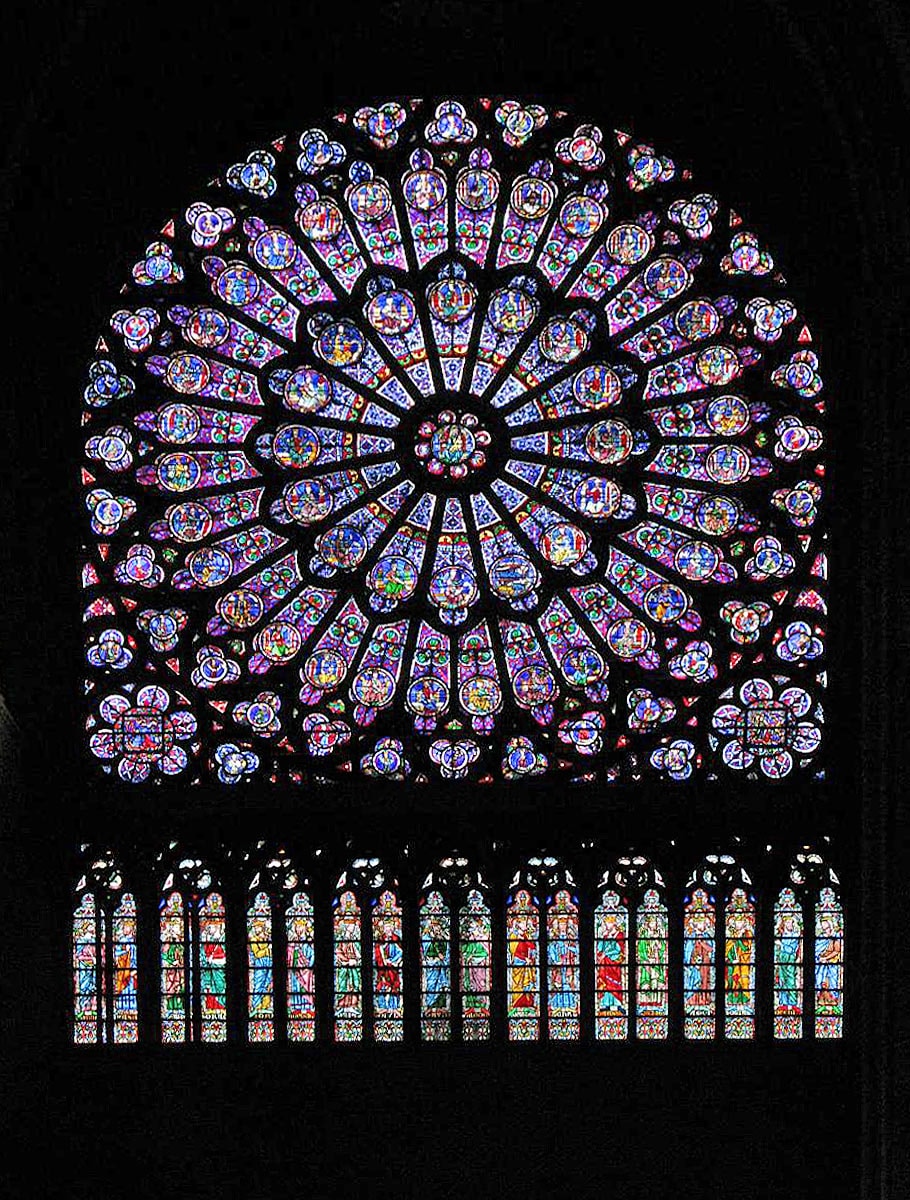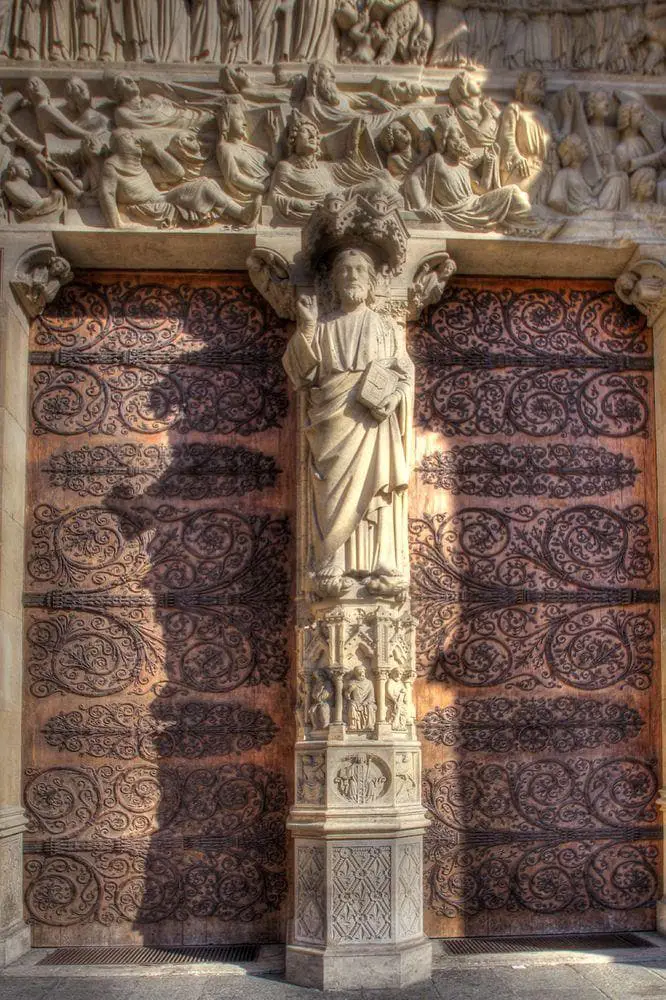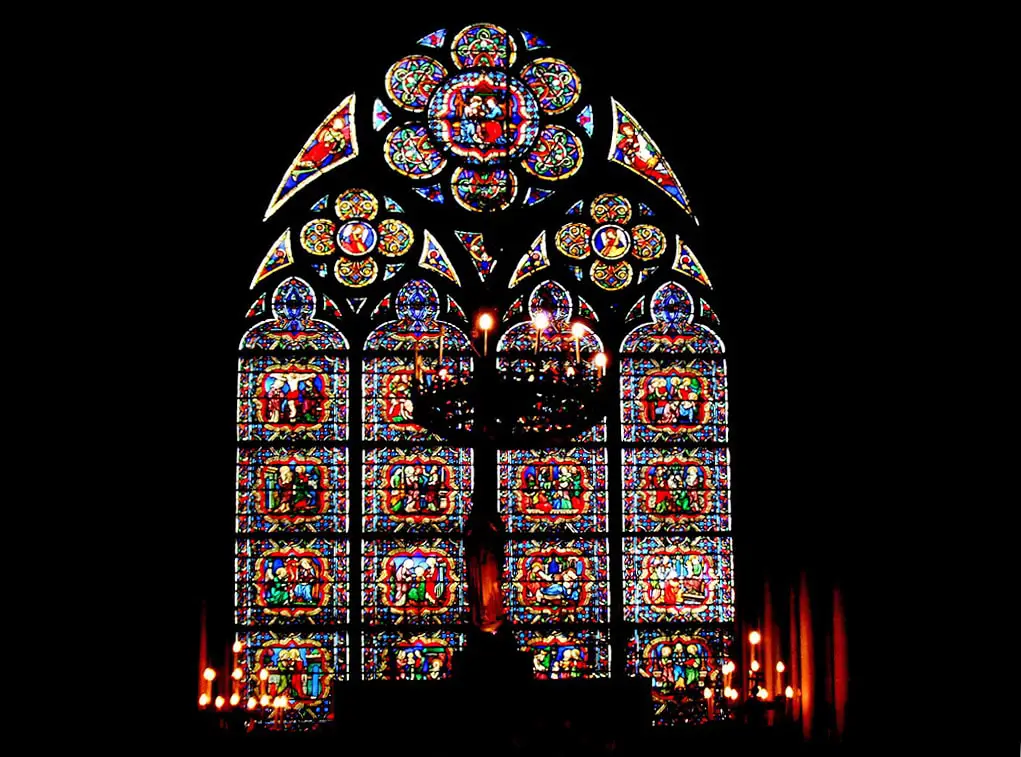World 🢖 Europe 🢖 France 🢖 Île-de-France
Churches 🢔 Religious architecture 🢔 Architectural wonders 🢔 Categories of wonders
Wonder
Notre Dame de Paris
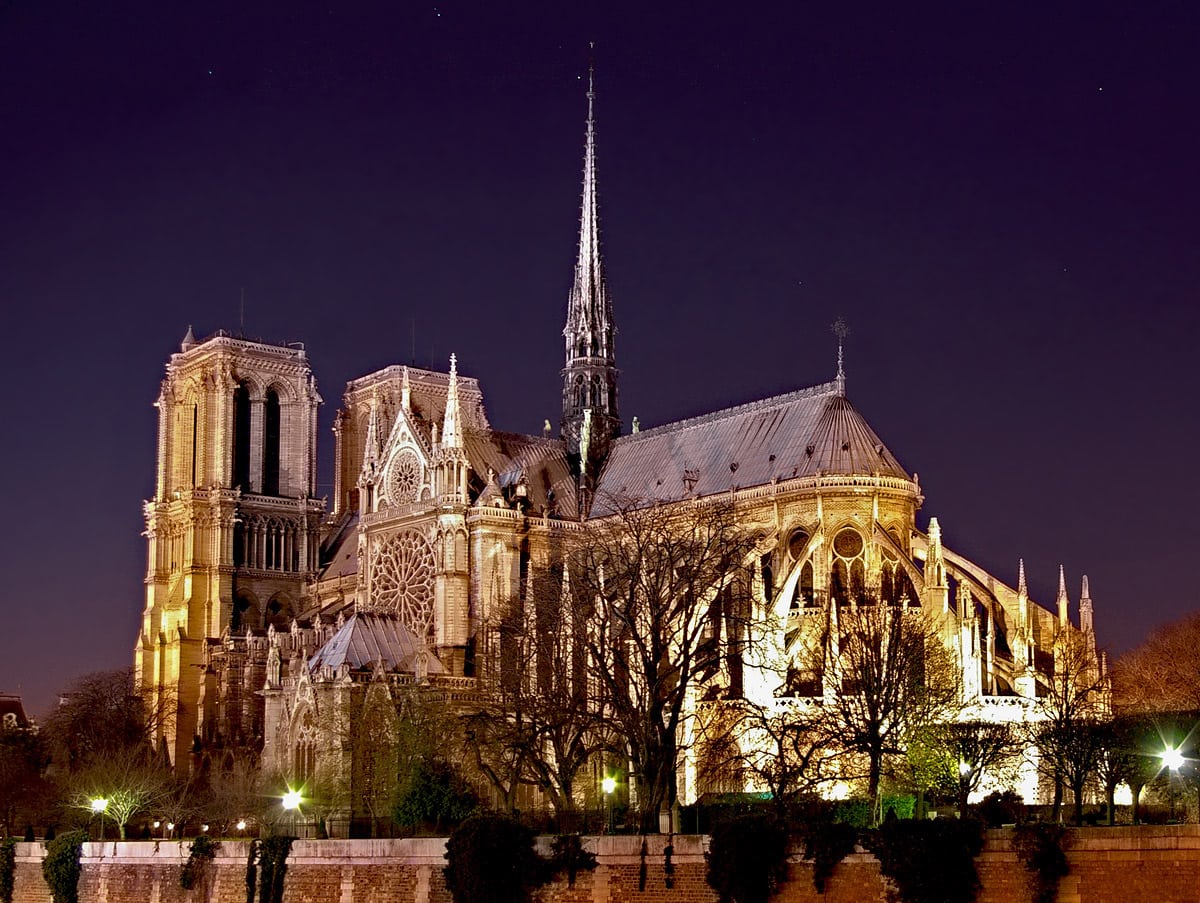
 In short
In short
One of the most iconic and best known man made landmarks in the world is Notre Dame de Paris. This cathedral is visited by more than 13 million people per year.
 73.2%
73.2%
GPS coordinates
Location, address
Name in French
Alternate names
Architectural style
Year of construction
Branch of Christianity
UNESCO World Heritage status
Map of the site
If you see this after your page is loaded completely, leafletJS files are missing.
 In detail
In detail
There is no single reason why exactly this building is that popular – Notre Dame de Paris does not hold any world records and in every single aspect there is some other building that surpasses the cathedral. Notre Dame though has some special charm, special fame – and special beauty. This great French Gothic cathedral represents the essence of Paris – the most romantic and the most visited city.
Cathedral has been partly devastated by the fire on 15th April 2019. We can be sure that in some years time it will be renovated and as glorious as ever before.
Site
The 1.2 km long Ile de la Cité in popular literature is considered to be the cradle of Paris. The true beginning of Paris might have started somewhere else nearby – but this island in the Seine also was inhabited early, sometimes around 50 BC.
Previous shrines
It is possible that an important Roman temple was built on the island at the site of Notre Dame.
In the 4th century in this site was built the cathedral of Paris – Saint-Étienne. It was rebuilt in the 6th century when an enormous, 70 m long cathedral was built. This beautiful structure incorporated exquisite mosaics.
Construction of Notre Dame de Paris
Start
There are some doubts whether the old cathedral was THAT bad – it seems that the assessment of its state was presenting things worse than it was in reality. But who can tell it now? One was clear though – Paris was growing very quickly and the previous cathedral was becoming too small.
In 1160 the newly appointed Bishop of Paris Maurice de Sully ordered to demolish the old cathedral to clear a space for a new, better one.
Back in those times Paris consisted mainly of smaller wooden buildings. Such houses covered also Ile de la Cité and several were demolished to make way for a new road to supply the construction materials.
Construction of the church was started in 1163 with a ceremonial, which was attended by Pope Alexander III.
Early Gothic
The construction of the new cathedral was started in the Early Gothic style. This style was in trend – cathedrals in this amazing style were constructed in Saint-Denis, Noyon, and Laon, the one in Sens was nearing its completion.
High Altar was consecrated in 1182 – now the service was possible in the new church.
Works proceeded actively also after the death of Maurice de Sully in 1196. Next bishop Odon de Sully (not closely related to Maurice) proceeded with works. He died in 1208 – but works proceeded also after his death.
High Gothic and Rayonnant Gothic
Notre Dame de Paris is such a complex structure that it took a long time and many experts to build it. As time went by, architecture changed and new technological inventions came.
In the first half of the 13th century the cathedral was constructed in High Gothic style – and is considered to be one of the highest achievements in this style.
Rayonnant style – structurally "lightest" version of Gothic style – dominated in the middle of the 13th century, when Jean de Chelles and later – Pierre de Montreuil – led the works. The style is represented in several transepts and portals of the cathedral, in the gorgeous rose windows.
In 1240 was completed the first – northern tower of the cathedral and by this time it was decided that towers of the cathedral will not have spires.
Refined finishing
The construction of the cathedral lasted for some two centuries – until the late 14th century. Over the last century, the exquisite structure was adorned with numerous sculptures – some of the best ones in medieval Europe. Each sculpture was modeled separately and individually and most of them had some structural importance, holding one or another element of the cathedral. Not less impressive were the windows with stained glass and countless other features.
The church in medieval times was brightly painted. Now the color has worn off.
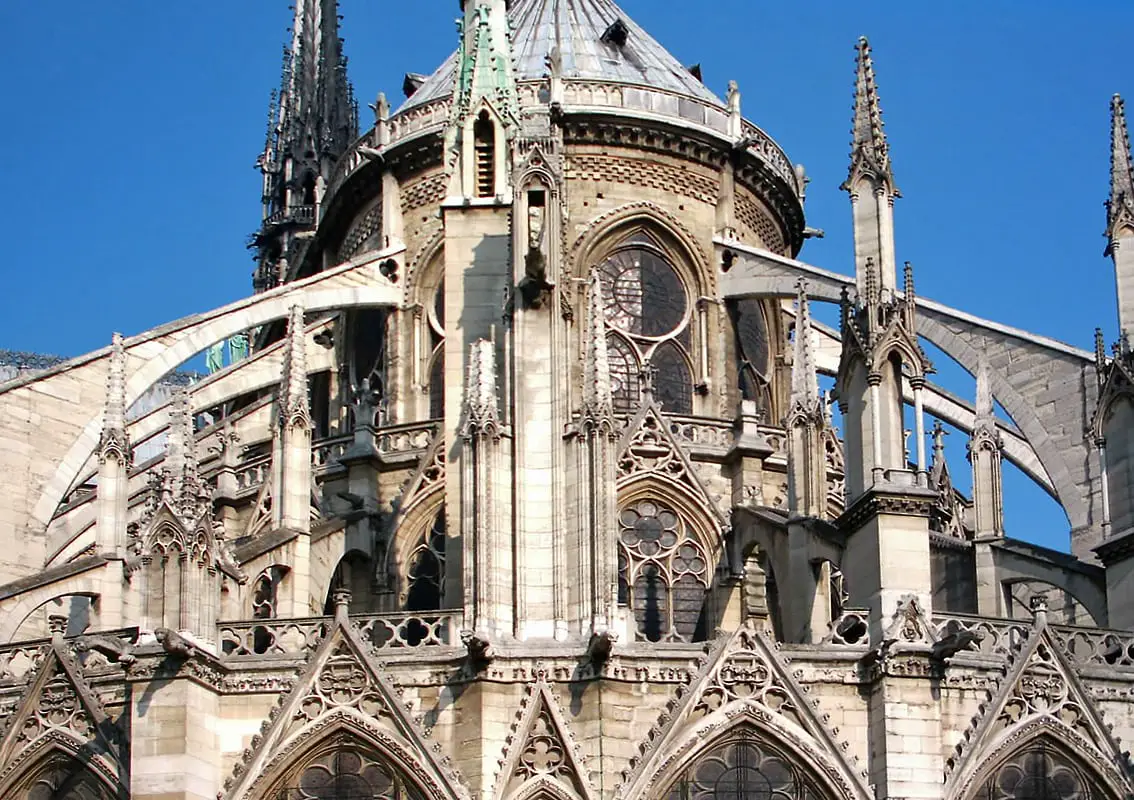
Flying buttresses – fight with the structural damage
The lightness of Rayonnant Gothic had its price. Light walls were raised higher and higher and higher and… started to crack and slanted outwards.
A new invention was used to prevent the new cathedral from collapse – arched exterior supports or flying buttresses. Notre Dame was one of the first structures which got this unusual feature of Gothic architecture – they were built by Jean Ravy in 1318 – 1344.
As the construction proceeded, builders started to enjoy these external supports. Flying buttresses became thinner and longer and finally did not hold anything. They were turned into something else: rainwater flowed down along these constructions – thus water was channeled possibly far from the main building.
History after the construction
Wolves of Paris
The winter of 1450 was especially harsh and predators did not have any other prey but humans. A pack of wolves entered through the walls of Paris and killed 40 people – mainly women and children. The city was in a panic, rumors spread, the leader of the pack was nicknamed – Courtaud (Bobtail).
Parisians managed to lure the pack on the isolated Ile de La Cité and wolves were stoned and speared in the front of Notre Dame de Paris.
Damage and alterations
It is somehow weird – but throughout the history of France, the rich symbols and artworks of the cathedral provoked the rioters. Thus Huguenots intentionally damaged the statues in 1548 – they considered them idolatrous.
Modernization of the cathedral was made during the reign of Louis XIV and Louis XV. Many beautiful stained glass windows were considered to be too dark by priests and in 1786 were ordered to be replaced by clear glass. Happily, the rose windows were left intact. Many tombs and statues were removed from the cathedral.
French Revolution
One of the worst periods in the history of the cathedral was the French Revolution. Many unique works of art were destroyed and plundered in 1793 – most of the large sculptures were damaged. Thus the heads of the sculptures of Judean kings in the south facade were chopped – the crowd thought that these statues show French kings. These heads were found in 1977 – and are in the National Museum of Middle Ages now.
Cathedral was reverted to the invented cults of revolutionaries and finally was used as a warehouse for the food.
Napoleon
The situation normalized in 1801 when the worship in the cathedral was renewed.
1804 Napoleon and his wife Joséphine were crowned in the cathedral. The building was in a dire state then – for the event it was whitewashed and the fractures and damages were hidden with draperies and decorations.
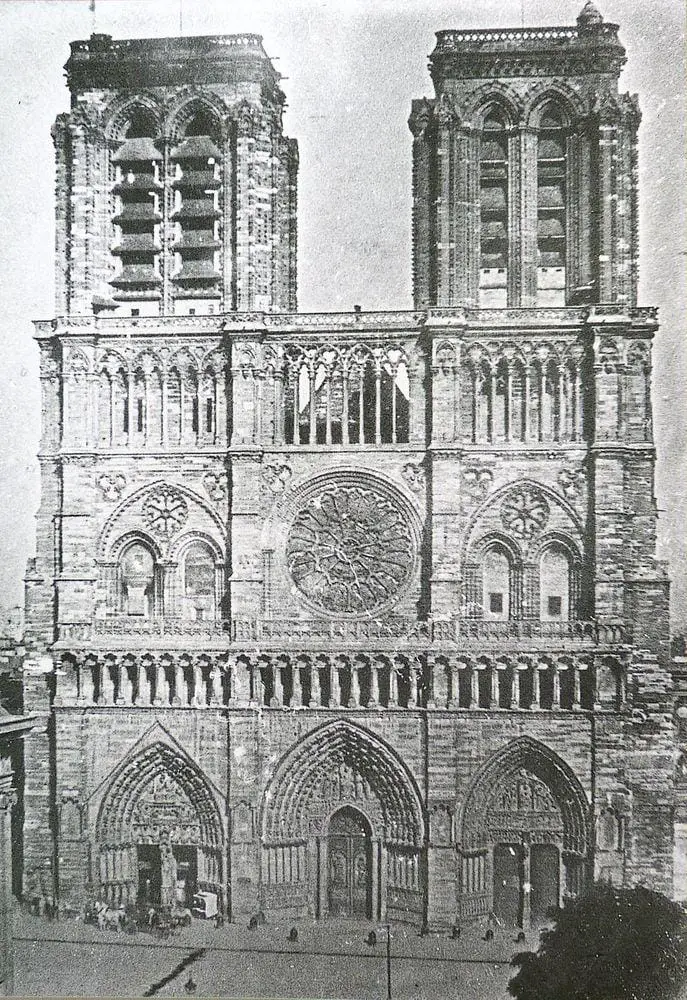
Dire state and Victor Hugo
By the 1820s – 1830s the beautiful cathedral was close to collapse and city officials considered removing it.
The successful novelist Victor Hugo wrote a novel "Notre-Dame de Paris" which was specially dedicated to this building. Remember – you may be were bored by reading the first hundred pages describing the cathedral in every detail – and only then started the tale about the Quasimodo and Esmeralda! Well – it was worth your time and time of many generations to come because it did wonders!
This popular novel was one of the factors which made the public aware of the heritage value of the Notre Dame de Paris. The first half of the 19th century was the time when the values of the past were in trend – and thus, urged by popular opinion, the authorities decided to save this beautiful building.
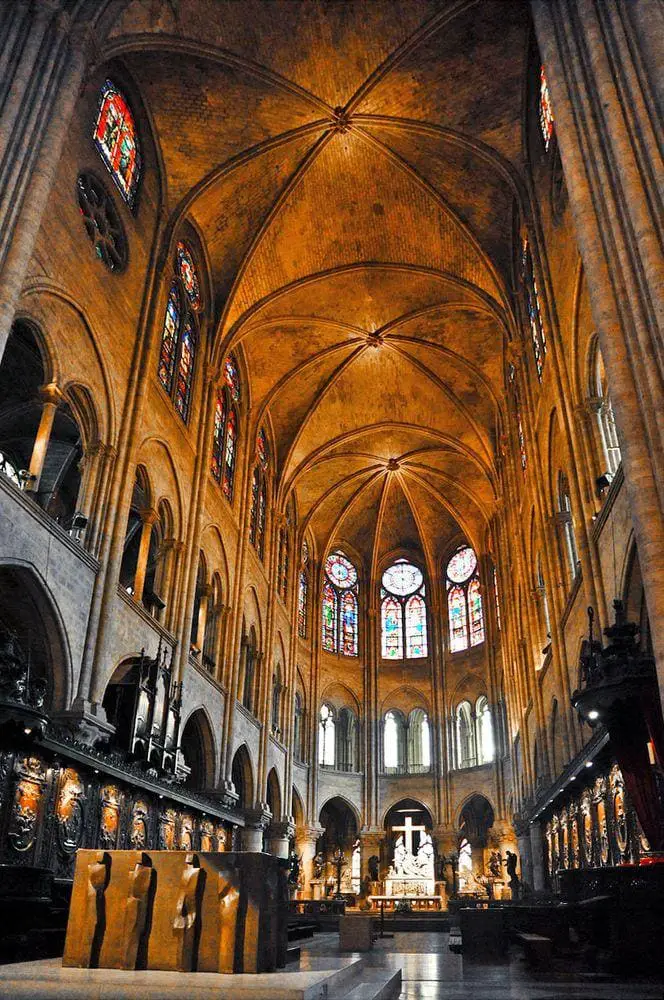
The big restoration
The ambitious works for the restoration of Notre Dame de Paris were started in 1845 and lasted until 1864. Works were overseen by Jean-Baptiste-Antoine Lassus and Eugène Viollet-le-Duc. Works were expensive and extremely complicated.
Novadays still is alive a permanent cliche regarding the work of Lassus and Viollet-le-Duc which is expressed with one word: "controversial". Many art historians find it necessary to express regrets about the alterations to the original design done during this restoration.
We should bear in mind though that the cathedral was crumbling, many sculptures were lost or destroyed beyond recognition. Restorers did not have exact drawings of many features of the original church. Many alterations to the original structure were needed in order to reinforce the old building and to prevent its further disintegration.
During the works was rebuilt the flèche – a smaller tower, which was removed in 1786. This is the tallest detail of the cathedral – 96 m tall (collapsed in the fire of 15th April 2019).
The most famous and most daring alteration was the adding of chimeras – but few consider this to be a failure.
Viollet-le-Duc was also asked to add spires to the towers – a detail that was never planned for the cathedral. The architect did not like this idea – and he made a sketch that showed the spires in a possibly bad way. Thus the idea was refused.
It is easy to criticize after the work is done – but without the restoration of 1845 – 1864, this wonder of medieval architecture would be lost.
Latest history
In 1871 the church was in dire danger again – rioters put the fire to the benches in the church. Happily, the flames were extinguished.
Some damage was done during the Second World War. Some of the stained glass windows were smashed with stray bullets and now are replaced with modern designs.
Important work is done after 1991 – the cleaning of the facade with all its sculptures: the centuries-old layer of dust is removed from the stones with high-tech equipment.
Cathedral is getting new bells too. There are produced new bells for the northern tower – it is planned to put them up in 2013.
Notre Dame de Paris gets some 30 000 visitors per day – this beautiful structure serves as a major tourist attraction for five centuries at least. Towers of the cathedral can be ascended – and the visitor then stands next to chimeras which thoughtfully look down on the city.
Fire in April 2019
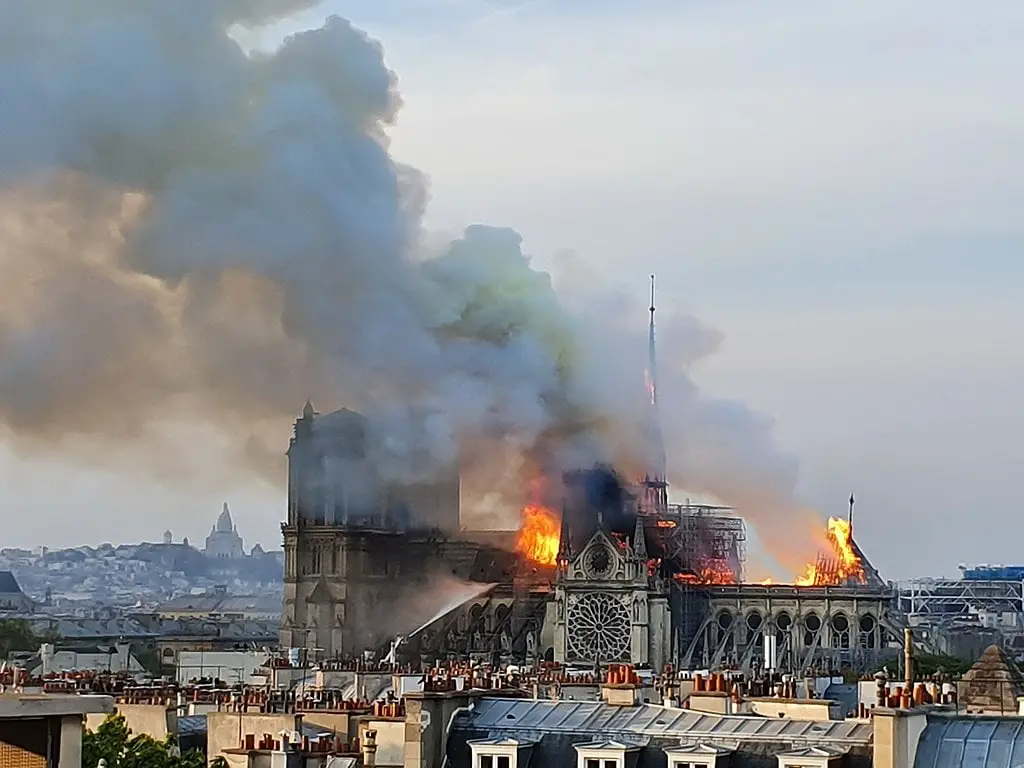
On the evening of 15th April 2019 a devastating fire damaged the cathedral and it nearly collapsed. The central tower (fleche) collapsed and much of the lead-covered roof was lost. Happily, firefighters managed to limit the fire, and the facade, towers, and stained glass windows were saved. Valuables and bronze sculptures were saved. Nevertheless, there is needed extensive work to renovate the cathedral to its former glory.
Fire started around the central part of the roof and its reason is not known yet – but there is a high probability that it is linked to the restoration works.
Technical details
Notre Dame de Paris in figures
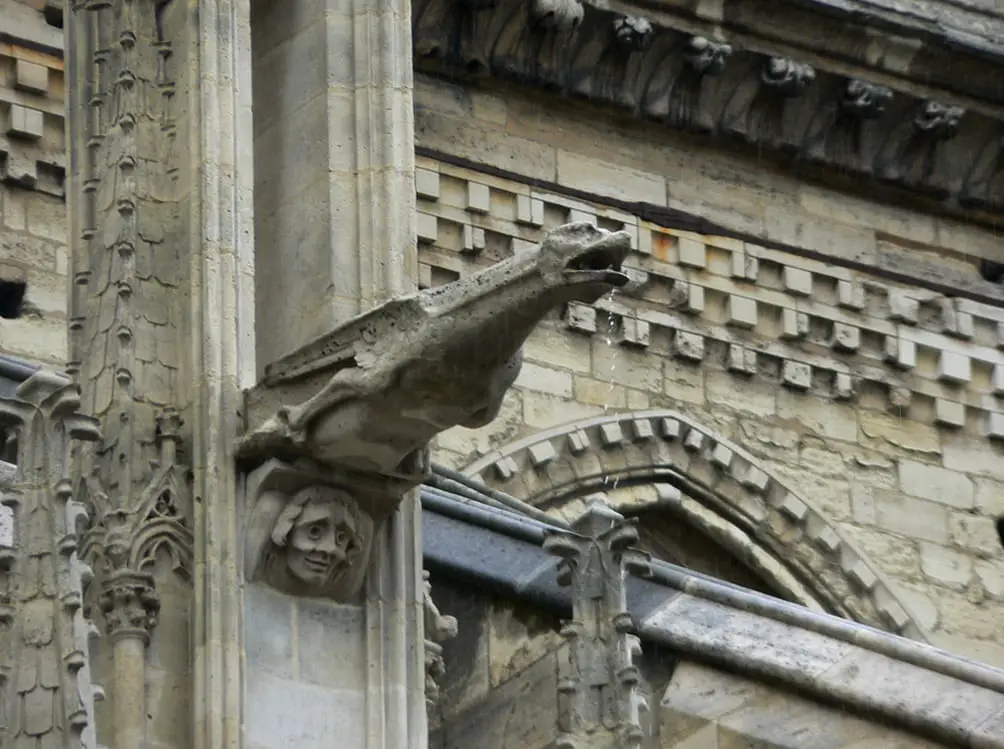
- The cathedral is 127 m long and 48 m wide.
- Main towers are 69 m high, but the smaller tower (before its collapse in fire) – 96 m tall.
- The height of the vault of nave is 33 m.
- Nave of the cathedral has 10 bays, choir – 5.
- The cathedral has 113 windows and 75 pillars and columns.
- Cathedral has 29 chapels, in total here are 37 quadrangular bays.
- Indoor area is 4,800 m² large.
- 9,000 people can fit into the cathedral.
- The diameter of both largest rose windows is 13.1 m. These are some of the largest rose windows – but not the largest ones.
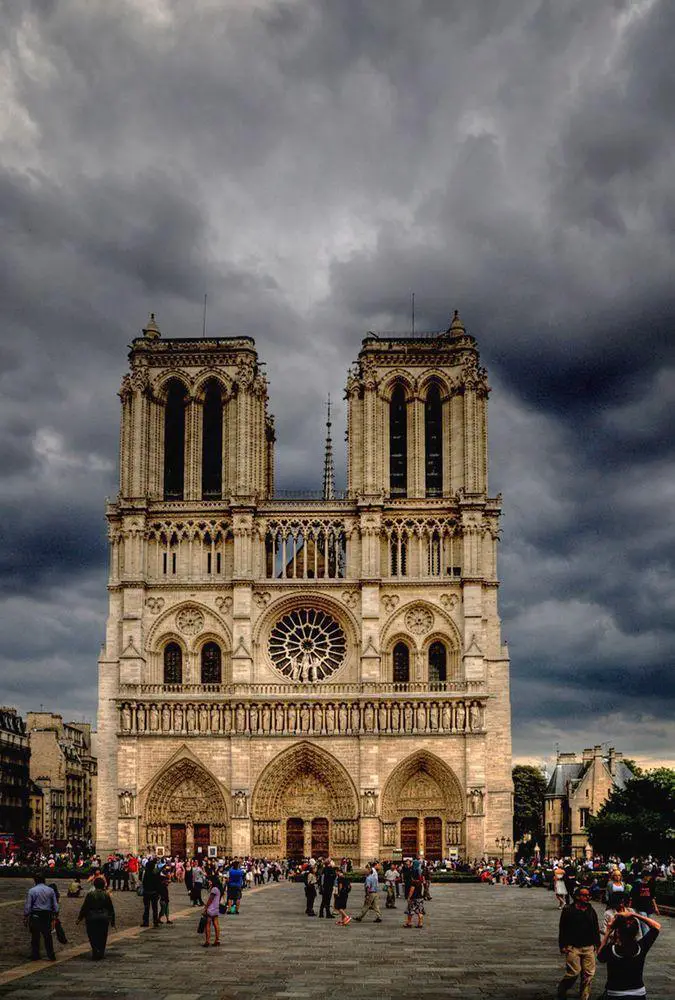
Exterior
The whole exterior of the cathedral is rich with architectural forms and sculptures. Especially ornate are the portals in the west, south, and north facades. All sculptures were brightly painted in Medieval times.
Facades
West facade includes both towers and opens towards the plaza. It was constructed in 1200 – 1250. The facade has three portals – Portal of the Last Judgement in the center and portals of the Virgin and St. Anne at sides. All are covered with a huge number of high-quality sculptures. The central portal shows the dead awakened by angels and judged by Christ. Here is everything – angels, demons, Jesus, pope, warriors, even black African.
The beautiful south facade was started in 1257. The main element of this facade is the giant rose window with a smaller rose window above it. Sculptures show scenes from the life of St. Stephen and local saints. This part of Notre Dame Cathedral is one of the highest achievements in Gothic architecture.
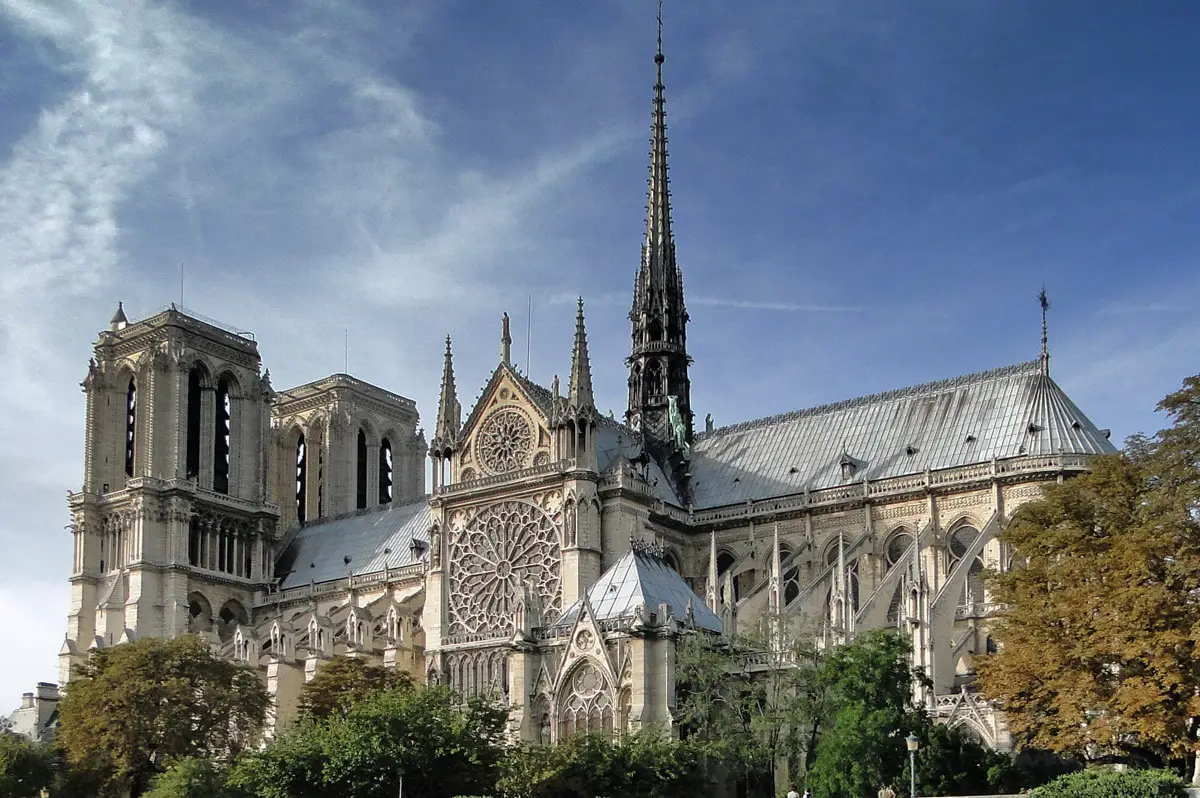
North facade is directed towards a narrow, shady street and there is much less attention on it. Nevertheless the richness and quality of the decoration is similar to the one of other facades. Sculptures show the cenes of infancy of Christ and the story of Theophilus.
The semicircular apse is an architectural value on its own. It is accented with fourteen flying buttresses, which do not hold the structure – they just divert the rainwater. On the ends of flying buttresses are gargoyles – grotesque, medieval sculptures. Water flows through the "throats of these stone creatures.
Details
Gorgeous and sophisticated are the doors with wrought iron hinges. These hinges are extremely sophisticated and in some cases almost cover the whole door area with arabesques.
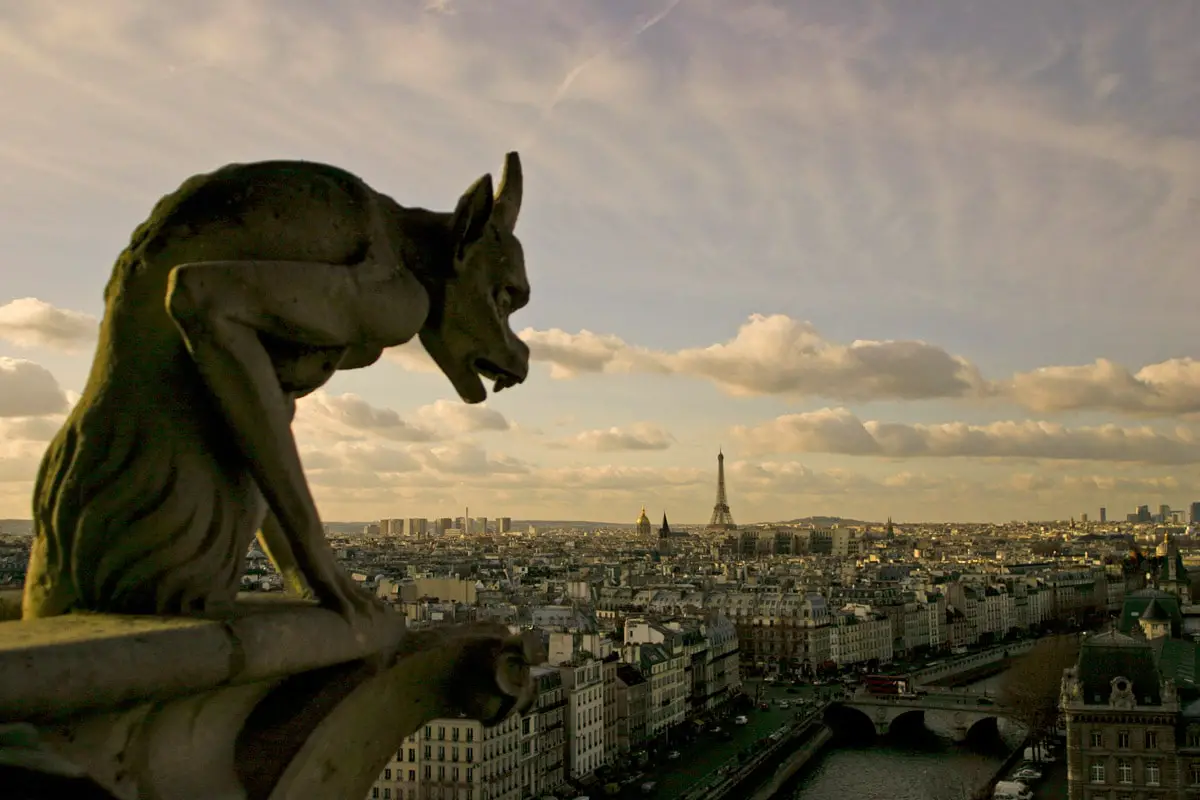
Cathedral is adorned with chimeras – grotesque statues serving just for decorative purposes. These sculptures were made in the 19th century as a romantic allusion of the dark Middle Ages and are designed after the fantastic drawings of Honore Daumier. Chimeras sit comfortably in different locations and are contemplating the life in Paris.
This element was introduced by Viollet-le-Duc – and this was courageous addition. It has been huge success – these sculptures are a part of the identity of Paris now.
Interior
The rich and diverse interior of the cathedral manifests the diverse styles of Gothic architecture.
Very special value is the stained glass in the windows. It has been created in different time periods, but part has been preserved from medieval times.
Interesting feature is the top floor of the cathedral – it is built from oak wood, which serves well since 1220. It is estimated that 1,300 oak trees have been used here – these trees would form a forest with an area of 21 ha.
The organ of the cathedral has 7,800 pipes. Being an organist in Notre Dame is a highly prestigious position for a musician. Currently here are appointed four organists, each playing for three months of the year.
Cathedral has five bells. The great bourdon bell Emmanuel is located in the south tower – happily, it was saved from the destruction during the French Revolution. It weighs over 13 tons and has a beautiful tone. In the north tower are four other bells – currently, there are made new ones, which will be installed in 2013.
Cathedral contains a rich collection of exquisite art, including the beautiful Gothic and Renaissance paintings, granted to the cathedral by goldsmiths every 1st May. Especially valuable relic is the purported Crown of Thorns – legendary cultural property which really might come from Judea.
 Linked articles
Linked articles
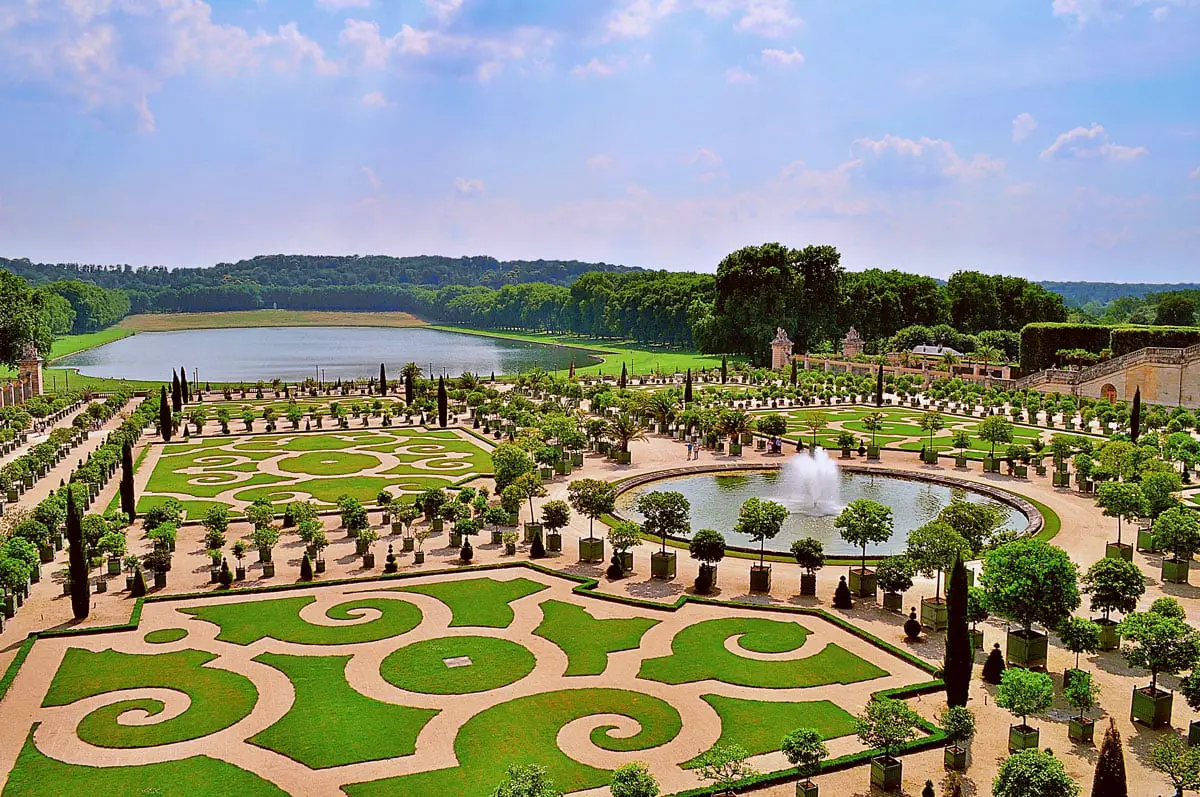
Wonders of Île-de-France
For many centuries in the region of Île-de-France was one of the power centers of world politics and culture – the French monarchy. Thus it comes as no wonder that there are concentrated many of the most impressive buildings in the world, such as palaces (including Versailles) and numerous other buildings, especially in Paris.
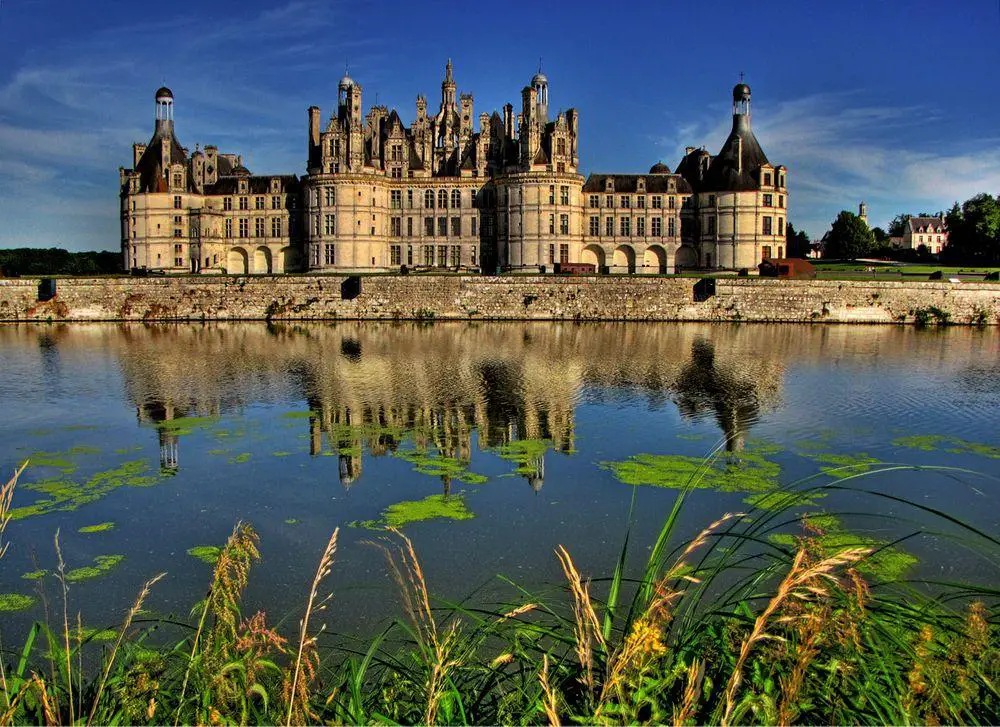
Wonders of France
France is home to many of the best-known landmarks in the world. This country is literally crammed with thousands and thousands of the most diverse attractions.
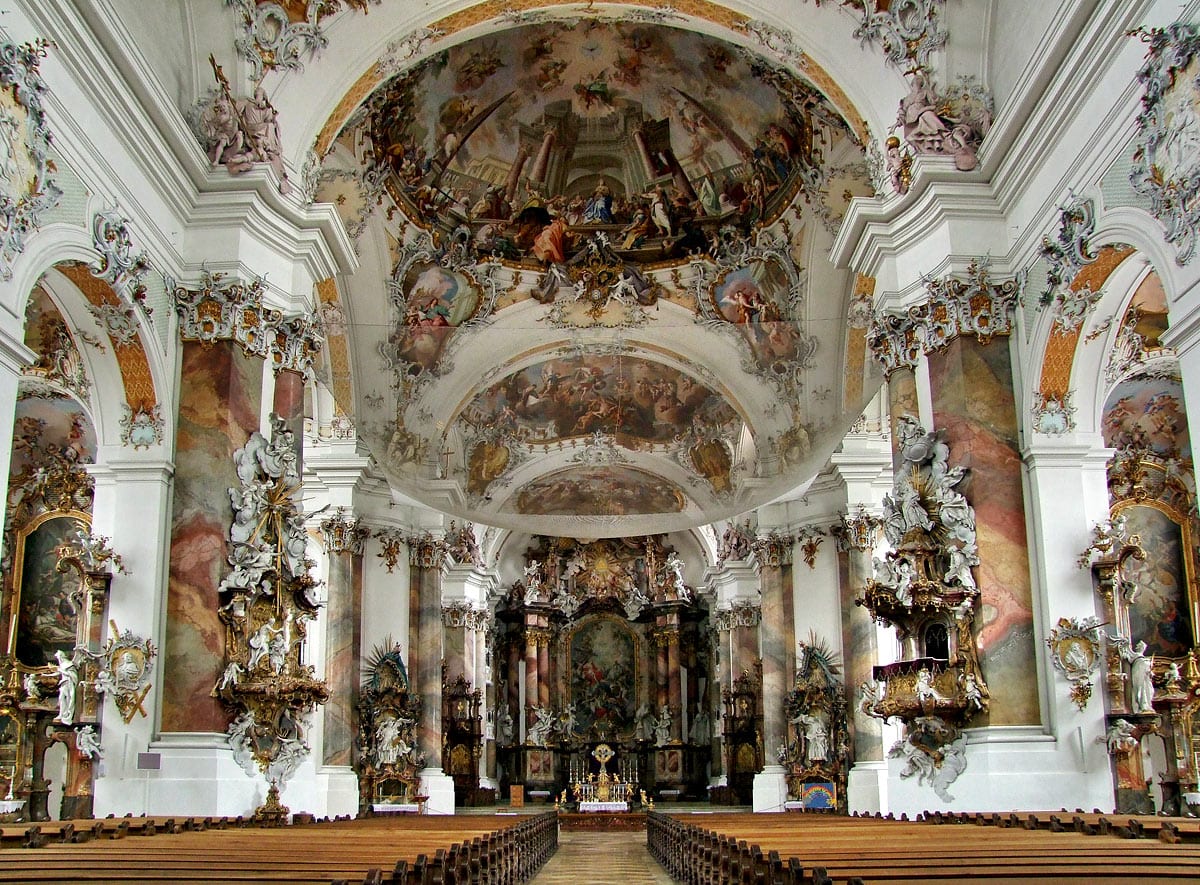
Churches
Throughout the millennia Christian churches have been the epitome of architecture and arts achievements in Western culture.
 Recommended books
Recommended books
Great Gothic Cathedrals of France: A Visitor’s Guide
Great Gothic Cathedrals of France guides readers on a tour of twelve French cathedrals that best exemplify one of the greatest glories of Western civilization. From the beautiful facade of Notre-Dame in Paris to the transcendent beauty of the stained glass at Chartres, this book clarifies the significant elements of their architecture by means of its text and images.
How to Read Churches: A Crash Course in Ecclesiastical Architecture
Small enough to fit in a pocket yet serious enough to provide real answers, this primer is a must-have for architecture and history buffs, tourists, and churchgoers interested in decoding the styles and symbols of religious buildings. Every building contains clues embedded in its design that identify not only its architectural style but also who designed it, what kind of congregation it was built for, and why. This practical yet charming handbook is the key to decoding the style, history, evolution, and social significance of religious buildings.

